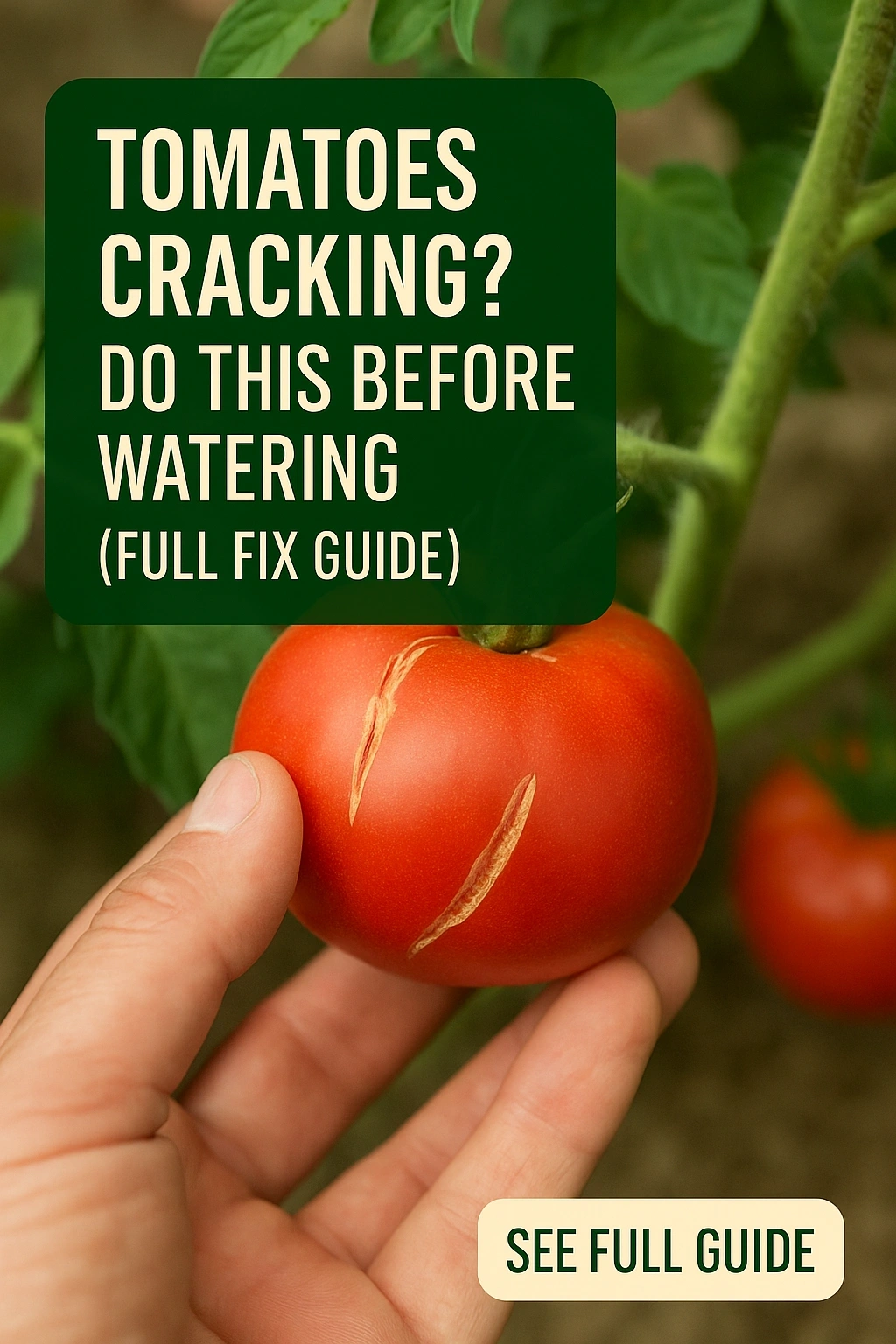
Tomato cracking is a common problem that many gardeners encounter, leading to unsightly fruit and reduced harvest quality. Understanding why tomatoes crack and how to prevent it is crucial for any tomato enthusiast. In this guide, we will explore effective strategies to address this issue, ensuring your tomatoes remain healthy and beautiful.
What Causes Tomatoes to Crack?
Tomato cracking occurs when the growth of the fruit is disrupted, typically due to fluctuations in moisture levels. Several factors contribute to this phenomenon:
- Irregular Watering: Inconsistent watering practices can lead to sudden changes in the moisture content of the soil.
- Rapid Growth: When tomatoes experience rapid growth, often due to favorable weather conditions, the skin may not keep pace with the expanding fruit.
- Environmental Stress: Factors such as excessive heat or cold can also impact the fruit’s development.
- Varietal Differences: Some tomato varieties are more prone to cracking than others, especially those with thinner skins.
Effective Watering Techniques to Prevent Cracking
Proper watering techniques are essential in maintaining consistent moisture in the soil, which can significantly reduce the risk of tomato cracking. Here are some effective practices to consider:
Establish a Consistent Watering Schedule
Creating a routine for watering your tomato plants helps ensure they receive a steady supply of moisture. Aim to water deeply and less frequently, rather than giving small amounts of water more often. This encourages the roots to grow deeper, enhancing their ability to absorb moisture.
Monitor Soil Moisture Levels
Regularly check the moisture level of the soil to determine when to water. You can do this by sticking your finger into the soil about an inch deep. If it feels dry, it’s time to water. Using a moisture meter can also provide a more accurate reading.
Soil and Mulching Practices for Healthy Tomatoes
The health of your soil plays a significant role in preventing tomato cracking. Healthy soil retains moisture and provides essential nutrients. Here are some soil management tips:
Improve Soil Quality
Enhance your soil by incorporating organic matter such as compost or well-rotted manure. This addition improves moisture retention and provides nutrients necessary for healthy growth.
Utilize Mulching Techniques
Applying a layer of mulch around the base of your tomato plants helps retain soil moisture and regulate temperature. Organic mulches, like straw or wood chips, also suppress weeds and improve soil structure as they decompose.
Environmental Considerations for Tomato Growth
Environmental factors can significantly influence tomato development and cracking. Managing these conditions is vital for healthy fruit production.
Provide Shade During Extreme Heat
During periods of extreme heat, consider providing shade for your tomato plants. Using shade cloth or planting taller crops nearby can help protect them from direct sunlight, reducing stress on the plants.
Protect from Temperature Fluctuations
Tomatoes are sensitive to temperature changes. If you expect a drastic change in weather, consider using row covers or cloches at night to maintain a stable environment for your plants.
Choosing the Right Tomato Varieties
Selecting tomato varieties that are less prone to cracking can be a proactive step in preventing this issue. Here are some options to consider:
Crack-Resistant Tomato Varieties
Look for varieties specifically bred for crack resistance. Examples include:
- Cherry Tomatoes
- Roma Tomatoes
- Beefsteak Tomatoes
Consider Local Varieties
Local heirloom varieties are often well-suited to the specific climate and conditions of your area, making them less susceptible to issues like cracking.
FAQs
What are the signs of cracking in tomatoes?
Cracking in tomatoes can manifest as fissures or splits in the skin, which can occur in various patterns. These cracks can appear on the shoulders, sides, or even at the stem end of the fruit.
Can cracked tomatoes still be eaten?
Yes, cracked tomatoes are generally safe to eat, but they may be more susceptible to rot and pests. It’s advisable to inspect them carefully before consumption.
How often should I water my tomato plants?
Watering frequency can vary based on weather and soil type, but a good rule of thumb is to water deeply once or twice a week. Adjust based on rainfall and soil moisture levels.
Is it necessary to use mulch for tomatoes?
While not strictly necessary, using mulch is highly beneficial. It helps to retain moisture, suppress weeds, and maintain a consistent soil temperature, all of which support healthy tomato growth.
Can I prevent cracking by adjusting fertilizer use?
Yes, over-fertilizing can promote rapid growth, which may lead to cracking. Use fertilizers judiciously, focusing on balanced nutrients to support steady growth without excess.
Conclusion
Tomato cracking can be frustrating, but with the right practices and techniques, you can significantly reduce its occurrence. By establishing a consistent watering routine, improving soil quality, and choosing appropriate varieties, you can enjoy a bountiful harvest of beautiful, crack-free tomatoes. Remember, attentive care and observation are key to successful gardening.
